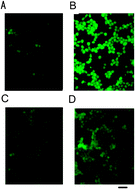d-Histidine and l-histidine attenuate zinc-induced neuronal death in GT1-7 cells
Abstract
Although zinc (Zn) is an essential trace element, excess Zn causes neuronal death following transient global ischemia and plays a central role in the pathogenesis of vascular-type dementia. In this study, we developed a rapid and convenient screening system for substances that prevent Zn-induced neurotoxicity by using GT1-7 cells (immortalized hypothalamic neurons), with the aim of identifying a treatment for vascular-type dementia. Among tested, we found a protective substance in the extract of round herring (Etrumeus teres), and determined its structure as L-histidine. Analysis of the structure–activity relationship by using histidine analogues revealed that both L-histidine and D-histidine exhibit the same neuroprotective activity. Furthermore, we investigated the molecular mechanisms underlying the protective effect of histidine on Zn-induced neurotoxicity using Zn imaging and gene expression analysis, and found that histidine protects against Zn-induced neurotoxicity not by inhibiting Zn chelation, thereby preventing increases in intracellular Zn2+. Moreover, it is also suggested that endoplasmic reticulum (ER) stress and activity-regulated cytoskeleton associated protein (Arc) are implicated in Zn-induced degeneration of neurons.

- This article is part of the themed collection: Metallomics in Japan, 2013

 Please wait while we load your content...
Please wait while we load your content...